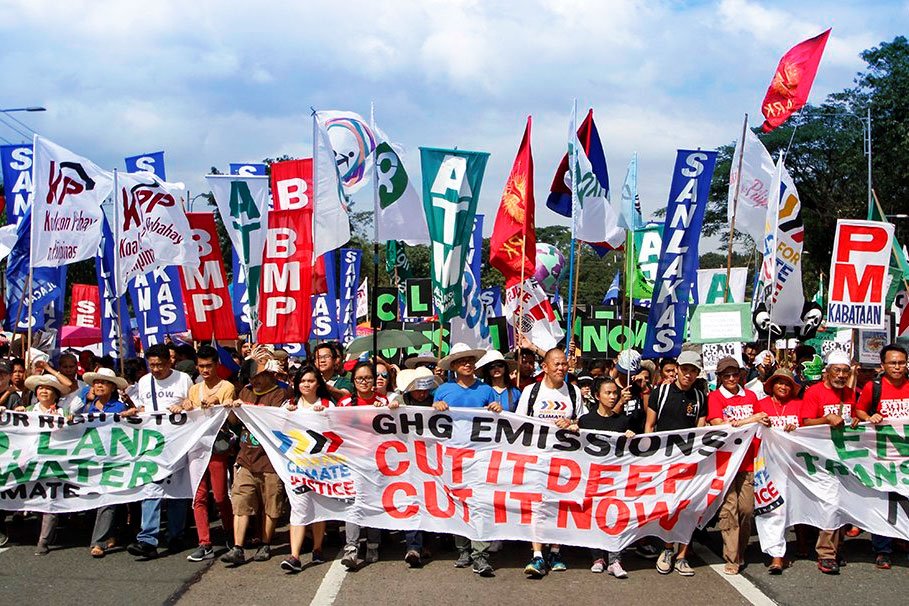On Thursday, Donald Trump announced that the United States would be pulling out of the Paris Agreement on climate change. It was a rebuke to US allies, US business leaders, the pope, the president’s own secretary of state, his daughter and son-in-law and the majority of Americans, who supported the agreement — but a clear victory for the president’s climate change-agnostic EPA chief, Scott Pruitt, and his senior adviser Steve Bannon
Today’s announcement kicks off a multiyear process that will not see the US fully withdrawn from the agreement until November 2020, the same month as the next US presidential election. During that time, the president said he would try to cut a new deal on climate change with world leaders.
“In order to fulfill my solemn duty to protect the United States and its citizens, the US will withdraw from the Paris climate accord, but begin negotiations to reenter either the Paris accord, or a really entirely new transaction with terms that are fair to the United States,” Trump said Thursday afternoon during a speech in the White House’s Rose Garden.
France, Germany and Italy promptly issued a joint statement saying that the Paris Agreement cannot be renegotiated.
“Bad deal”
The president said his idea was based partially on the idea that the Paris Agreement was a “bad deal” under which US rivals, such as China and India, “would not have to do anything.” This reading ignores that India and China have far exceeded their promises on slowing their emissions growth under the agreement. China has slowed its emissions growth so much in the last three years that they have almost flatlined.
A senior White House adviser told reporters that the move was also based on the White House’s legal interpretation of the agreement, which found that countries’ commitments could only be increased, not decreased. Many legal scholars disagreed with this view.
The Silver lining
The president’s decision drew worldwide condemnation, but relief from some quarters that the president didn’t choose an even more dramatic course of action. Pulling out of the Paris Agreement in this way leaves the door open for the US to rejoin the agreement in the future. The White House was reportedly considering other options that would have slammed that door shut.
Article 28 of the Paris Agreement prevents any country from leaving the agreement for three years from when it entered into force. That means that the US cannot formally exit the agreement until November 2019. Withdrawal then doesn’t take effect for another year — meaning the US will not be out of the agreement entirely until 2020.
The White House was reportedly considering other courses of action that would have made US reentry at a future date far less likely — including pulling the US out of the United Nations Framework Convention on Climate Change, the legal arrangement that undergirds the Paris Agreement. Trump also could have declared the Paris Agreement a treaty requiring Senate ratification, leaving the fate of US involvement in the hands of Congress where it would likely die a slow death.
So What’s next?
While the US withdrawal is pending, Trump is poised to ignore Obama’s promises under the agreement, and said in his Rose Garden address Thursday that he would “end” the United States’ “nationally determined contribution” — its voluntary commitment under the agreement. On a call with reporters, a senior White House adviser confirmed that this meant Trump would not do anything to implement President Obama’s pledge. Trump’s administration has already started work on undoing the Clean Power Plan, which was aimed at greening the energy sector. The plan, overseen by the Environmental Protection Agency, was a centerpiece of the previous administration’s promise to cut US greenhouse gas emissions by at least 26 percent.
Trump also promised to turn his back on the Green Climate Fund, a UN-orchestrated effort to raise money for projects that would help poorer countries develop sustainably and prepare for the effects of climate change.
Members of the previous administration did not take Trump’s move lightly.
“The nations that remain in the Paris Agreement will be the nations that reap the benefits in jobs and industries created,” President Obama said in a statement. “I believe the United States of America should be at the front of the pack.
“But even in the absence of American leadership; even as this Administration joins a small handful of nations that reject the future; I’m confident that our states, cities, and businesses will step up and do even more to lead the way, and help protect for future generations the one planet we’ve got.”
Obama’s EPA administrator, Gina McCarthy, declared Thursday “a disappointing and embarrassing day for the United States.”
A future president from Obama’s Democratic Party will be able to sign America back up for the deal, Michael Burger, executive director of Columbia’s Sabin Center for Climate Change Law, told UN Dispatch last month.
“Under Article 20, the Paris Agreement was only open for signature until April 21, 2017,” Burger said. “It remains open for ‘accession’ indefinitely. Accession post-Trump would be very similar, perhaps exactly the same, as signature pre-Trump.”
It remains unclear, however, whether the international community will be willing to again work with a country that has now bailed on two international agreements aimed at addressing climate change. When the Bush administration quit the Kyoto Protocol, it saw relations with its allies become chillier. Now, Trump has done the same thing — but 15 years later, with climate change moving faster, the seas higher and the planet hotter.
As Trump delivered his Rose Garden address Thursday, the Larsen C ice shelf, an Antarctic chunk of ice the size of Delaware, was completing its split with the continent and drifting out to sea.
